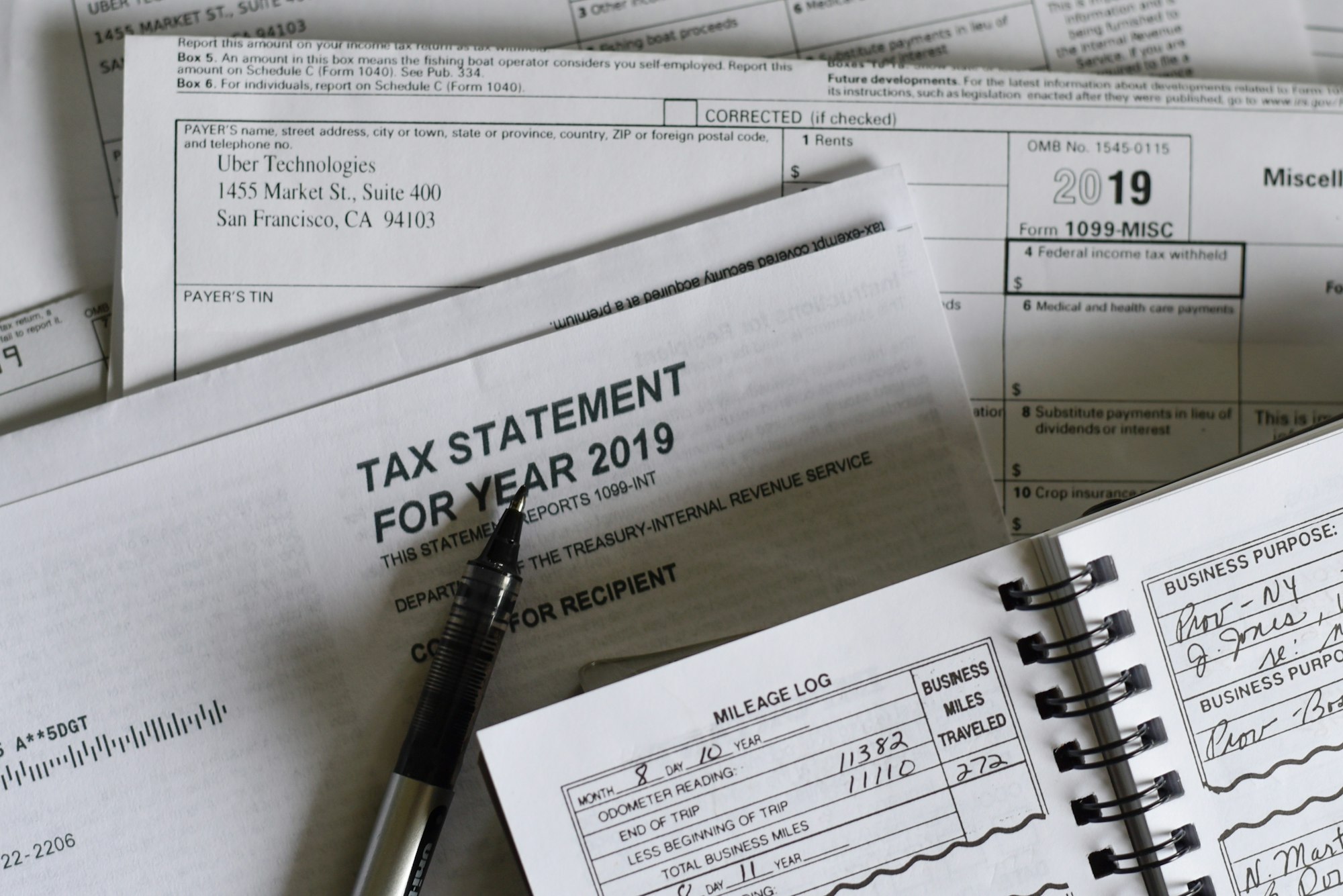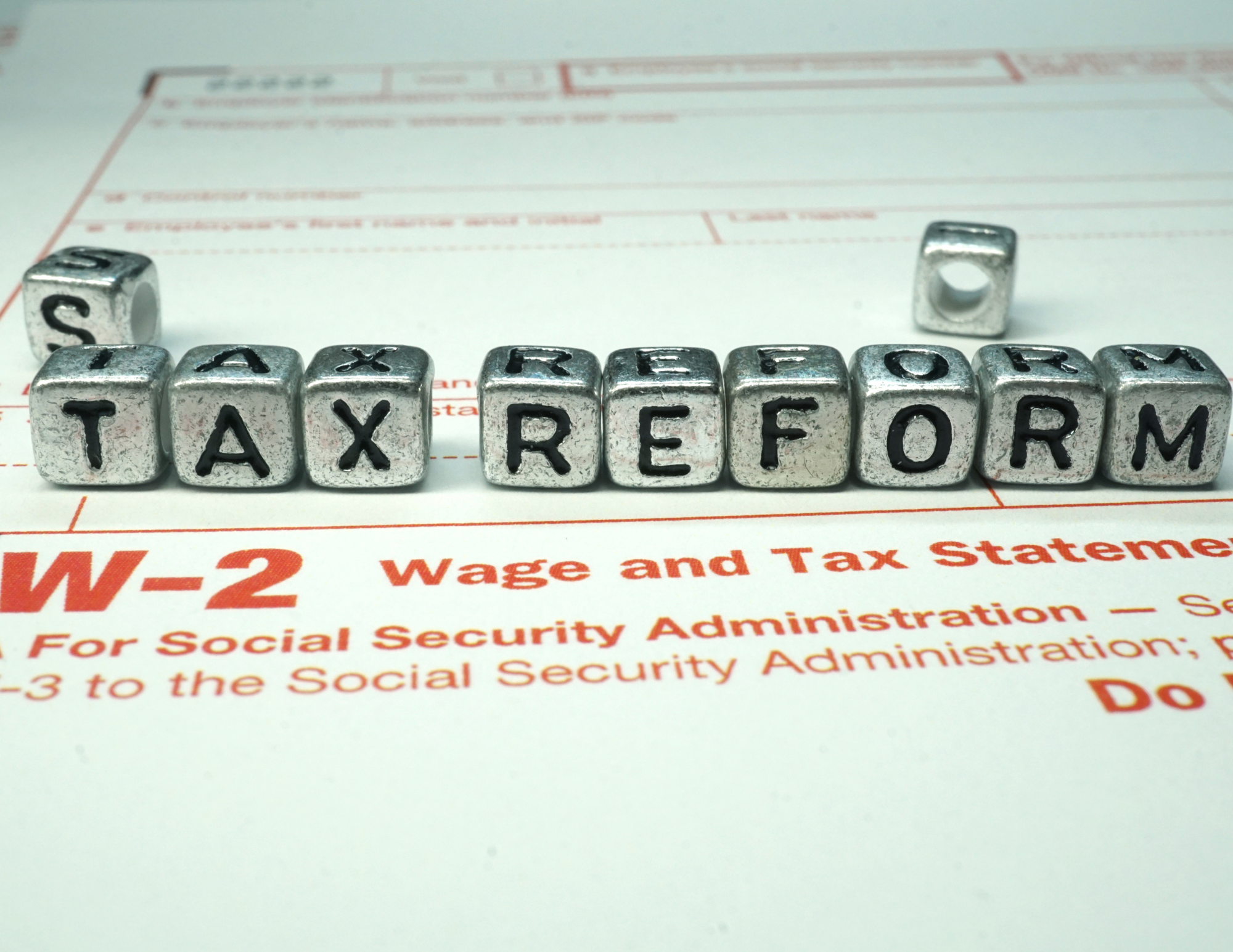Are you a business owner? If yes, then you must be aware of the various taxes that you need to pay. However, you might not be aware of the different tax reforms introduced by the government. Taxes can not be avoided, and they eat into the business's profits. So, it is important to know about the various tax reforms introduced by the government.
This article will discuss everything you need to know about tax reforms. We will start by discussing tax reform and why it is necessary. We will then move on to discussing the different types of tax reform.
Let's get started.
What will you find in this article –
- What is Tax Reform?
- The Purpose of the Tax Reform
- Objectives of Tax Reform
- Types of Tax Reforms
- Individual Income Tax
- Corporate Income Tax
- Other Proposal
- Effects of Tax Reforms on Economy
- Effects of Tax Reforms on Individuals and Families
- Changes to Federal Income Tax Withholding
- Changes and Elimination in Itemized Deductions
- Suspended Personal Exemption Deduction
- The Average Deduction Almost Doubled
- Example of Tax Reforms
- Benefits of Tax Reform
- Limitations of Tax Reforms
- Conclusion
- Key Takeaways

What is Tax Reform?
Tax reform is the process of changing the way taxes are collected or managed by the government. It usually involves changing tax laws but can also include changes to how taxes are collected and enforced. Tax reform can be done to make the tax system simpler, fairer, or more efficient. It can also be done to raise more revenue for the government. Such reforms can have a significant impact on the economy and the way businesses and individuals operate.
There are many different ways to reform the tax system. Some reforms may be small, while others can be much more significant. For example, a small reform might change the income tax rate from 10% to 12%. A more significant reform could involve eliminating all deductions and credits or switching from an income tax to a consumption tax.
Reforms can also be temporary or permanent. A temporary reform might be implemented for a few years to raise extra revenue during a recession. A permanent reform might be made to simplify the tax code or make it more efficient.
The Purpose of the Tax Reform
- The Tax Cuts and Jobs Act was created to simplify the tax code, provide tax relief for American families, and make US businesses more competitive globally.
- One of the main goals of the Tax Cuts and Jobs Act is to create jobs and grow the economy. The thinking behind this is that businesses will create more jobs if they have more money. And when people have jobs, they spend money, which grows the economy.
- The other key goal of the Tax Cuts and Jobs Act is to make America’s tax code simpler and fairer. For example, the new law nearly doubles the standard deduction, so fewer people will itemize their deductions. This will simplify tax preparation for millions of Americans.
- The Tax Cuts and Jobs Act also repeals many complicated and unpopular tax provisions, such as the Alternative Minimum Tax (AMT) and the estate tax.
Objectives of Tax Reform
We now understand what tax reforms are. But you also need to understand why are tax reforms formed. while there are several reasons why government introduces any new reforms, here are the objectives to form Tax reforms.
1. Reduces Marginal Tax Rates
One of the objectives of tax reform is to reduce the marginal tax rates. It is believed that lower marginal tax rates boost economic activity as individuals have more after-tax income to save or invest. Reducing marginal tax rates can also be a way to offset the effects of inflation on taxpayers. When marginal rates are reduced, taxpayers can keep more of their income as their incomes rise with inflation.
2. Reduces the Tax Consequences of Investments and Savings
One rationale for tax reform is reducing investments and savings' tax consequences. By exempting some income from taxation or by providing special deductions or credits, tax reform can encourage individuals to save and invest more. This can lead to higher economic growth, as well as help offset any adverse effects of taxation on economic activity
3. Reduces the Likelihood and Prevalence of Tax Evasion
Tax reforms help close loopholes and ambiguous rules that allow easy tax evasion. This results in more effective tax collection by the government and discourages people from trying to avoid paying their taxes.
4. Improves Decision Making
Making informed decisions is critical to the success of any business. Tax reform can provide the clarity and certainty needed to make sound investments and strategic decisions that grow the economy and create jobs.
5. Encourages Job Creation
A lower corporate tax rate helps businesses expand, invest in new equipment and hire more workers. According to a study by the Tax Foundation, lowering the corporate tax rate from 35 percent to 20 percent would boost long-run economic growth by 1.5 percent, create 339,000 jobs and increase wages by 0.7 percent.
6. Simplifies the Tax Code
A simpler tax code is easier for both individuals and businesses to understand and comply with. This can lead to increased voluntary compliance as taxpayers are less likely to make mistakes that could result in penalties.
7. Improves Economic Efficiency
Tax reform can improve economic efficiency by eliminating preferential treatment of certain activities or groups. This occurs when resources are better allocated because the tax system is not distorting them.
Types of Tax Reforms
Tax reform can be a chaos if you do not understand it thoroughly. To understand the process and how it al works, you first need to learn about types of tax reforms and how does these different types can be put to use. There are mainly three different forms of tax reforms. These are -

Individual Income Tax
The first and most common type of tax reform is the individual income tax. As its name suggests, this tax reform applies to individuals who earn an income. This can be either through employment, investments, or other sources. The main goal of individual income tax reforms is to lower the overall tax burden for taxpayers.
For example, in 2017, the United States government enacted a series of individual income tax reforms. These reforms included lowering the marginal tax rates for all income brackets, increasing the standard deduction, and eliminating the personal exemption. The individual income tax reforms also expanded the child tax credit and created a new deduction for qualified business income.
Moreover, the reforms eliminated the individual shared responsibility payment, also known as the Obamacare individual mandate. All of these changes aimed to lower the overall tax burden for taxpayers and make the tax system simpler and more efficient.
Corporate Income Tax
The second type of tax reform is the corporate income tax. This form of tax reform applies to businesses, both small and large. The main goal of corporate income tax reforms is to lower the overall tax burden for businesses, making it easier for them to invest and create jobs. There are several different ways that corporate income tax reform can be achieved, such as by reducing the corporate tax rate, eliminating certain deductions and credits, or changing the way corporate income is taxed.
One of the most significant changes to the corporate income tax code was the Tax Cuts and Jobs Act of 2017, which lowered the corporate tax rate from 35 percent to 21 percent. This change was a significant win for businesses, as it immediately put more money back into their pockets. The Trump administration has also proposed additional changes to the corporate income tax code, such as eliminating the corporate alternative minimum tax (AMT).
The corporate income tax is an important source of revenue for the federal government, bringing in more than $300 billion per year. Despite this, there has been a growing movement to eliminate the corporate income tax entirely in recent years. This is because many people believe that the corporate income tax is unfair and puts an undue burden on businesses.
There are many different ways to reform the corporate income tax, and it will be interesting to see how this debate plays out in the coming years.
Other Proposal
This technique opens the door for new tax structures that can augment or replace the current levies. Carbon and consumption taxes are two examples of tax changes that would achieve different objectives than the current system. A carbon tax is a levy on carbon-based fuels, such as coal, oil, and natural gas. The goal of this type of tax is to discourage the use of these resources to reduce emissions of greenhouse gases.
Many economists support a carbon tax to deal with climate change since it would internalize the cost of pollution and provide an incentive for businesses and consumers to find cleaner energy sources. A consumption tax, also known as a value-added tax (VAT), is levied on goods and services at each stage of production and sale.
This type of tax is common in Europe, where it typically ranges from 10 to 25 percent. Unlike most other taxes, which are based on income, a VAT is based on spending. This means that lower-income people would pay a smaller share of their taxes than those with higher incomes.
Effects of Tax Reforms on Economy
Such change may not have the same consequences on all taxpayers and nations. Although, At the same time, it could improve the effectiveness of the tax system, on the other, it opens the door for short-term government pressure. These changes have impacted not only the effectiveness of the taxation system. They have often allowed it to be more open and transparent than previously, which has eventually led to the establishment of some tax incentives that have disrupted the economy.
Effects of Tax Reforms on Individuals and Families
While the overall effects of tax reform on individuals and families can be positive, there can also be some negative impacts depending on the specific provisions contained in the legislation. Such significant effects includes.
Changes to Federal Income Tax Withholding
Under the new tax law, the IRS released new income-tax withholding tables in early 2018. This resulted in changes to the amount of taxes withheld from workers' paychecks. The Tax Cuts and Jobs Act also eliminated personal exemptions, which were previously $4,050 for taxpayers and their dependents in 2017. The new withholding tables account for these changes.
Changes and Elimination in Itemized Deductions
To simplify the tax system, many have proposed eliminating or reducing the number of itemized deductions available. This would increase the amount of taxable income for individuals and families, but it would also likely result in a lower marginal tax rate.
Some of the deductions that could be eliminated include:
- The mortgage interest deduction
- The state and local tax deduction
- The charitable giving deduction
- The home office deduction
Suspended Personal Exemption Deduction
The personal exemption deduction is currently $4,050 per person. This deduction could be suspended to generate additional revenue.
The Average Deduction Almost Doubled
The standard deduction for a married couple filing jointly rose from $5,700 to $12,000. The deduction for an individual filer increased from $2,850 to $6,300.
Example of Tax Reforms
Lets get better clarity with some examples.
First
The total economy will be impacted if there are any changes to the rate of company taxes. A corporate income tax reform case would be if the current corporation tax rate were to be decreased. This is the case because a lower corporation tax rate will reduce the total cost of the businesses, which will increase employment across the economy. The wage rate will be higher along with the growth in employment, increasing the earnings of the company's employees.
The country's economy might benefit when worker wages increase since this would inevitably improve their purchasing power. Therefore, an example of tax reform is a lowering in the corporation tax rate.
Second
One of the most notable examples of tax reform is the implementation of carbon pricing. Some claim that by implementing carbon taxes in almost any economy, it'll be possible to accomplish two objectives: first, increase government revenue because anyone using fuel with a high carbon content would be required to pay taxes; second, discourage its use of energy with such a high carbon content because the government is inevitably aiming to lessen the harmful impact of carbon content in the surroundings.
Benefits of Tax Reform
We Understand what is tax reforms and what are the objectives for it. But that is not all we need to understand here. Rather than making it a forced compulsions, lets see all the benefits that Tax reforms offer to you as a business owner :6
1. Lowers the Marginal Tax Rate
The most significant way tax reform can help the economy is by lowering marginal tax rates. Marginal tax rates are the taxes paid on each additional dollar of income earned. When these rates are reduced, it provides an incentive for people to work harder and earn more money since they will keep a larger portion of their earnings.
This results in more money being reinvested into the economy, which can lead to economic growth. Moreover, it can also create more jobs as businesses expand their operations to accommodate the increased demand for their products and services.
2. Increases the Amount of Money Available to be Invested
Another benefit of tax reform is that it increases the amount of money available to be invested. When marginal tax rates are lowered, people have more money to save and invest. This results in more capital being available for businesses to expand their operations and create new jobs. It can also lead to higher wages as businesses compete for workers by offering higher salaries and benefits.
3. Improves Economic Efficiency
Tax reforms can help to improve economic efficiency by ensuring that the tax system is fair and equitable, providing incentives for work and investment, and simplifying the tax code. A well-designed tax system can promote economic growth and provide the revenue needed to fund public services. A simple and efficient tax system can also reduce compliance costs for businesses and individuals.
Tax reform can also help address some of the challenges an ageing population poses, such as funding healthcare and pensions. By making the tax system more efficient, revenues can be better directed to where they are most needed. In summary, tax reforms can help to improve economic efficiency and support sustainable economic growth.
4. Simplifies the Tax Code
The Tax Cuts and Jobs Act simplifies the tax code by eliminating many deductions and credits and doubling the standard deduction. Fewer taxpayers will itemize their deductions on their federal income tax returns. The new law also repeals the individual mandate, which required most people to have health insurance or pay the penalty.
5. Ensures that Everyone is Treated Equally Regardless of Their Property or Investment
The tax reforms ensure everyone is treated equally regardless of their property or investment. This is because the tax laws are applied uniformly to all taxpayers, and no special treatment or preferences are given to any particular group. This ensures that everyone pays their fair share of taxes, and no one can get an unfair advantage. The tax reforms also make it easier for the government to collect taxes, which helps to improve public finances.
Overall, the tax reforms help to create a level playing field for all taxpayers, and they help to ensure that everyone pays their fair share. This is good for society as a whole and helps keep the economy strong.
6. It Makes Sure That the Tax System is Well-Organized
The taxation system is one of the most important mechanisms through which a government can influence its economy. To be effective, the tax system must be well-organized and efficient. Tax reform is a process of changing the tax code to improve the functioning of the tax system. If the tax system is not well-organized, it can lead to unequal treatment of taxpayers, eventually resulting in social unrest.
7. It Provides Relief to the Taxpayers
Tax reform can also provide relief to taxpayers by reducing their tax burden. This is usually accomplished by eliminating loopholes and deductions that benefit only a few people. In some cases, tax rates may be reduced as part of a tax reform package. This can help to stimulate economic activity by giving people more disposable income.
8. It Fosters Compliance and Clarifies Tax Legislation
When tax laws are reformed, it usually means that the government is trying to make the system more efficient and effective. This can involve anything from broadening the tax base to streamlining deductions. The goal is to make the system simpler and fairer for everyone. One of the main benefits of tax reform is that it helps to ensure compliance with the law.
When the rules are clear and concise, it is easier for people to understand what they need to do to comply. This can result in more people paying their taxes on time and avoiding penalties for non-compliance. In addition, tax reform can also help to clarify tax legislation. This can make it easier for businesses to understand what they need to do to comply with the law.
9. It Expands the Tax Base and Lowers the Per Capita Tax
A tax base is the amount of money or value upon which a tax is levied. A lower per capita tax rate results in each person paying less in taxes. The expansion of the tax base through reform can make it so that everyone pays less in taxes while the government still collects the same revenue. This is fairer to taxpayers because everyone is paying a smaller share of the total tax burden.
10. It Eliminates Loopholes and Special Favors
Another way to make the tax system fairer is to eliminate loopholes and special favors that some groups or individuals have been able to take advantage of in the past. This ensures that everyone plays by the same rules and that nobody has an unfair advantage. This makes the tax system simpler and easier to understand for everyone involved.
Limitations of Tax Reforms
There are several limitations of the current tax reforms. The first is that there is a lack of progressivity in the system. This means that high-income earners pay a more significant percentage of their income in taxes than low-income earners. This can create an unfair tax burden on those who can least afford it.
Another limitation is that the tax code is often too complicated for people to understand. This can lead to people not paying their fair share of taxes or completely avoiding paying taxes altogether.
Finally, the current tax system doesn’t do enough to encourage economic growth. For the economy to grow, businesses need to invest and expand. However, the current tax code penalizes businesses for doing so. This limits the amount of investment and growth that can take place, ultimately hurting the whole economy.
Despite these limitations, tax reform is still a necessary and important step in ensuring everyone pays their fair share. By making the system more progressive and simplifying the code, we can make sure that everyone pays their fair share and that businesses have the incentive to invest and grow. This will help create a stronger and more prosperous economy for everyone.
Conclusion
The tax reform debate has been ongoing for years, with no end. The main issue is how to make the tax code fairer and more equitable for everyone. There are many different ideas about what tax reform should look like, but one thing is clear: any reforms should ensure that everyone is treated equally under the law. There are a number of ways to achieve this goal.
One approach would be to eliminate all deductions and loopholes that benefit certain groups or individuals more than others. This would create a level playing field for everyone and make it easier to collect taxes owed. Another option would be to institute a flat tax, where everyone pays the same rate regardless of their income. This would also ensure that everyone is paying their fair share.
No matter what approach is taken, it is vital that any tax reform proposals be carefully considered and debated. With so much at stake, any changes to the tax code must be made to benefit all taxpayers, not just a select few.
How Deskera Can Assist You?
Deskera has the tools to help you manage your payroll, leaves, employee onboarding process, and managing employee expenses, all in a single system. Easily generate pay slips for your employees and simplify your payroll management with Deskera. It also digitizes and automates HR processes including hiring, expenses, payroll, leave, attendance, and more.

Key Takeaways
- Tax reform is a complex and controversial issue that has been debated for years.
- There is no easy solution, but any tax reforms should be designed to ensure everyone pays their fair share.
- The investments you make today will have a big impact on your taxes later in life.
- Reforming the tax code can increase revenue levels and foster long-term independence from foreign assistance and natural resource earnings.
- Direct taxes on wealth and income are one type of tax (e.g. property tax, personal and corporate income taxes)
- Careful consideration and debate in tax reforms is essential to ensure that any changes to the tax code are in the best interests of all taxpayers.
- The tax reforms help simplify the tax code and make it easier to collect taxes. Any approach taken should be carefully considered so that it doesn’t end up benefiting only a few people.
- The major limitation of tax reforms is that they can adversely affect the economy by discouraging investment and consumption.
Related Articles











